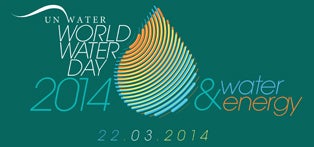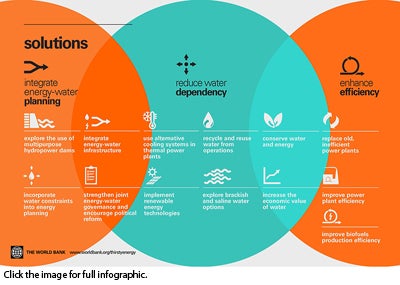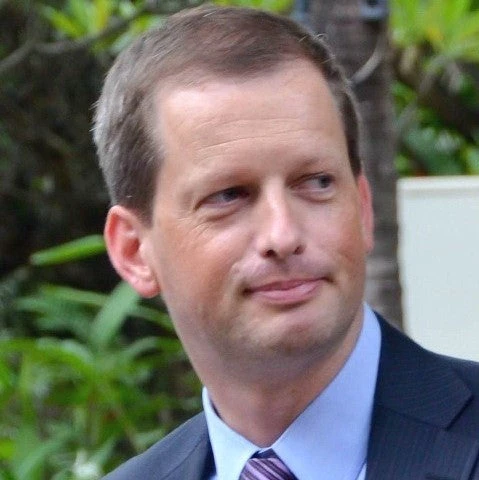 For the last six years, a power plant in San Luis Potosi, Mexico has bought water from a nearby wastewater treatment plant to use in its cooling towers (instead of using freshwater). This operation, Project Tenorio, a public-private partnership, continues today and has already resulted in the reduction of groundwater extraction of at least 48 million cubic meters (equivalent to 19,000 Olympic size pools) and increased aquifer sustainability.
For the last six years, a power plant in San Luis Potosi, Mexico has bought water from a nearby wastewater treatment plant to use in its cooling towers (instead of using freshwater). This operation, Project Tenorio, a public-private partnership, continues today and has already resulted in the reduction of groundwater extraction of at least 48 million cubic meters (equivalent to 19,000 Olympic size pools) and increased aquifer sustainability.
This is a good example of the water and energy nexus in practice: the wastewater treatment plant covers almost all of its operating costs from this additional revenue stream and the power plant gets a more reliable water source that is also 33% cheaper than groundwater in that area.
Treated wastewater has been used to reduce the water requirements of power plants in several other countries as well, as water supply becomes more variable or disappears. In the US, for example, around 50 power plants are using treated wastewater for cooling in order to adapt to water shortages. However, innovative integrated approaches like these are still more of an exception than the norm.
Integrating wastewater treatment plants and water reuse is just one approach to addressing water and energy challenges. This year, the United Nations has dedicated World Water Day 2014 to Water and Energy in order to draw attention to this challenge: today, more than 1.3 billion people lack access to electricity, over 768 million people lack access to potable water and 2.8 billion live in areas of high water stress. Developing countries will be the most vulnerable to increased pressure on water and energy resources, and the impacts of climate change, as they often lack the regulatory framework and infrastructure to mitigate increasingly variable water supply. World Water Day also highlights the importance of integrated planning through concerted policies and infrastructure, as in the case of Project Tenorio, and improved resource efficiency across all sectors.
This day also builds momentum on the growing recognition from companies that water risks may compromise future energy production. Global leaders are becoming more aware of the magnitude of water and energy challenges, and the need to balance these tradeoffs. It is clear that all approaches are context-specific and the tradeoffs between water and energy must be considered carefully.
At the World Bank Group, we are working to highlight the challenges presented by water and energy through the Thirsty Energy initiative. We have already been blogging on the  challenges here and here. However, one of Thirsty Energy’s goals is to work with countries to identify and promote solutions and synergies like the ones described above. As regions of the world continue to experience water constraints, and pressures mount due to climate change and increasing population, innovative solutions will be crucial to ensure sustainable development of water and energy resources.
challenges here and here. However, one of Thirsty Energy’s goals is to work with countries to identify and promote solutions and synergies like the ones described above. As regions of the world continue to experience water constraints, and pressures mount due to climate change and increasing population, innovative solutions will be crucial to ensure sustainable development of water and energy resources.
March 22 is World Water Day. For more information, visit unwater.org/worldwaterday



Join the Conversation